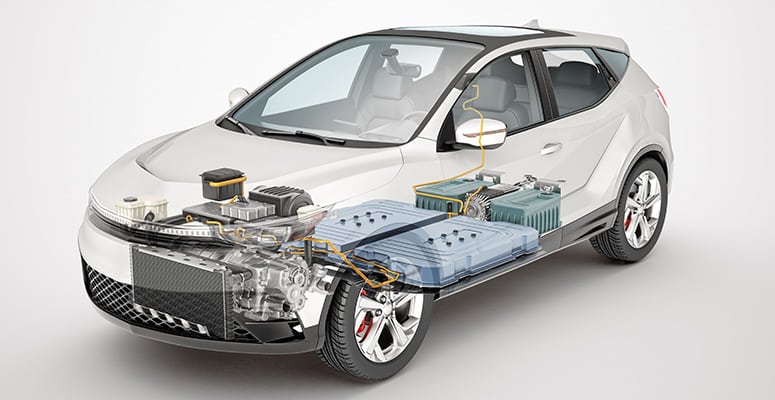The risk of lithium-ion batteries – Thermal Runaway in EV’s

What are lithium-ion batteries?
Lithium-ion batteries (Li-ion batteries) are a type of rechargeable battery widely used in numerous applications, including electric vehicles. They are known for their high energy density, relatively lightweight, and long cycle life.
How do lithium-ion batteries work?
Lithium-ion batteries work by moving lithium ions between two electrodes—an anode (negative electrode) and a cathode (positive electrode)—through an electrolyte. During charging, lithium ions are stored in the anode. When the battery discharges, the lithium ions move to the cathode, releasing energy. The movement of lithium ions is facilitated by a separator, which prevents direct contact between the electrodes. This process repeats during the charging and discharging cycles, allowing the battery to store and release energy.

What is the fire risk of lithium-ion batteries?
Lithium-ion batteries have become widely used in various applications, including portable electronics, energy storage systems, and electric vehicles. While lithium-ion batteries offer numerous benefits, such as high energy density and long cycle life, they also pose certain fire risks.
When it comes to electric vehicles (EVs), Lithium-ion batteries are commonly used due to their high energy density and ability to provide extended driving ranges. While EVs are generally considered safe, there are some risks associated with lithium-ion batteries in this context. One of those risks is Thermal Runaway.
What is Thermal Runaway?
Thermal runaway is a phenomenon that can occur in certain types of batteries, including lithium-ion batteries, and refers to an uncontrolled, self-accelerating increase in temperature within the battery cell or pack. It is a highly critical condition that can lead to overheating, release of flammable gases, and, in extreme cases, fire or explosion.
Thermal runaway typically begins with a localized thermal event, such as a short circuit or a failure within the battery cell. This can be caused by physical damage, manufacturing defects, overcharging, over-discharging, exposure to high temperatures, or other factors that disrupt the normal operation of the battery.

The risk of lithium-ion batteries according to Paul Christensen
Paul Christensen, Professor of Pure and Applied Electrochemistry at Newcastle University recently gave an interview to the International Fire and Safety Journal about Thermal Runaway. Christensen is currently involved in lithium-ion research projects, including the ongoing research of large lithium-ion battery modules in collaboration with a number of fires.
Thermal Runaway can occur in any kind of lithium battery, but according to Christensen ‘as you get the bigger and bigger lithium-ion batteries, the surface area to volume ratio gets worse and worse. The heat that should be escaping and dissipating stays inside the battery. This is why using lithium-ion batteries in vehicles can be very dangerous. ‘The time between an e-scooter showing the first signs of thermal runaway and fire or explosion can be 10 seconds or less’. Paul Christensen even believes Lithium-ion batteries shouldn’t exit. ‘They’re what is called ‘thermodynamically unstable”.
What can you do when an Electric Vehicle catches fire?
Fighting electric vehicle fires is not the same as fighting normal vehicles. When an electric car catches fire, you can’t just put it out with water. ‘Putting water on the car is rather like having a fire in your kitchen and putting the water onto the roof’ Christensen said. At FireIsolator, we fully agree with Paul Christensen. That is why we created a concept for fighting EV fires.
The Fire Isolator Concept consists of elements that, when you use them together, deliver the best results for fighting EV fires:
- Our Fire Blanket is used to isolate and control the fire and to prevent collateral damage.
- Aerosol units interrupt the thermal runaway and suppress the fire to lower the temperature.
- A water mist lance is to spray water onto the blanket in order to reduce toxic fumes and smoke and cool down the car.
- Thermal imaging camera to check the temperature.
- A dipping container.
Contact us for more information.

